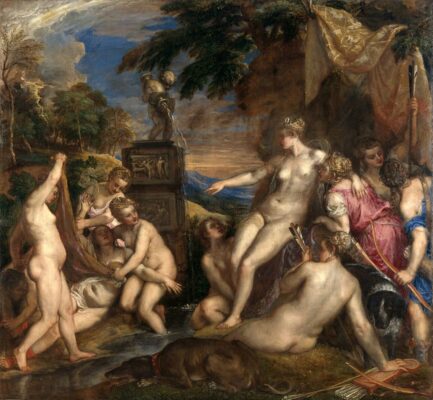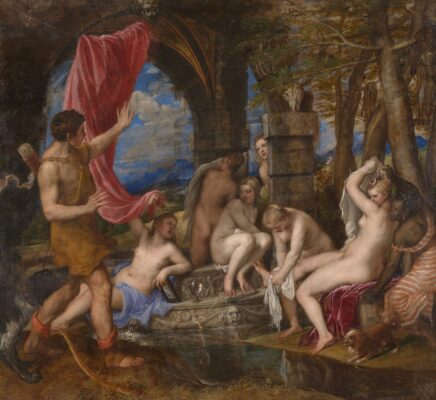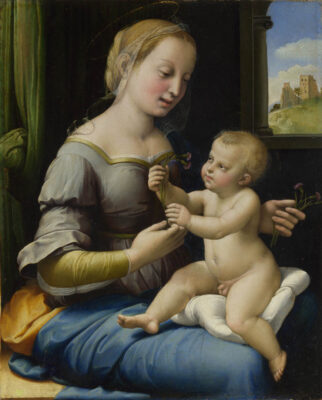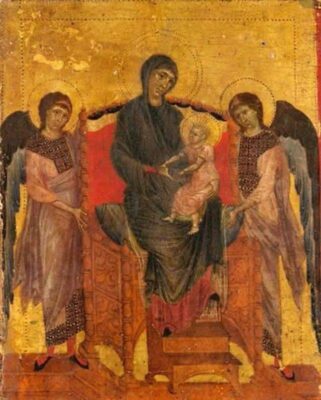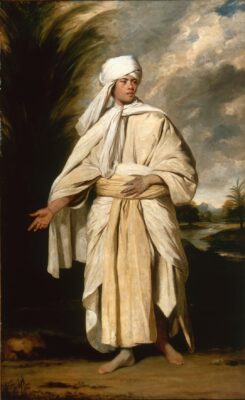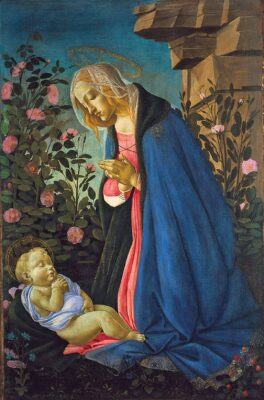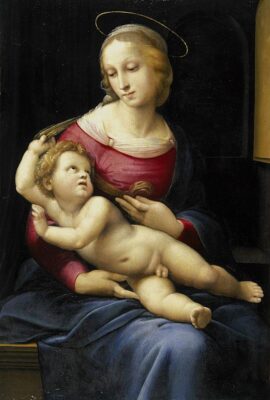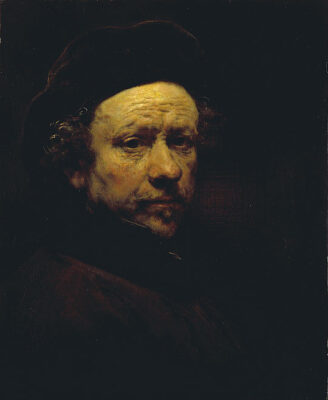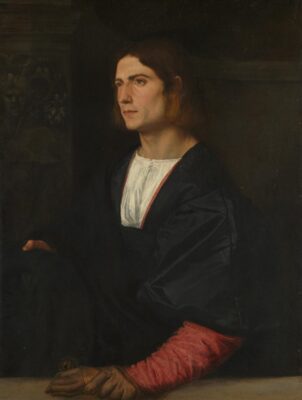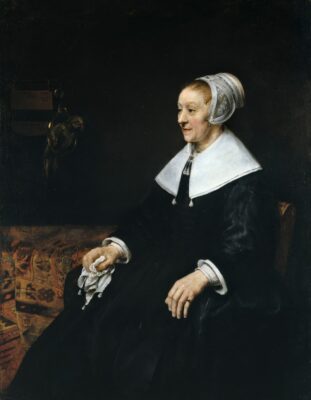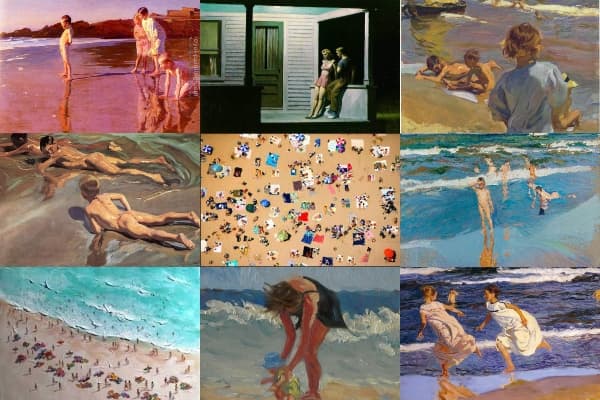Saved for the nation · UK fights against the export of its art treasures
by G. Fernández – theartwolf.com. Published in February 2008. Updated in May 2012.
Long before the petrodollars took over the art market, before the Japanese Impressionist boom of the 1980s, before the American tycoons of the early and mid-20th century, the British nobility dominated the art market. In the 18th and 19th centuries, the great fortunes of the UK competed for the best works on the market, at a time when -unlike today- the art market still offered a huge quantity of extremely important Old Master paintings. Many of these works (Leonardo, Rembrandt, Titian…) became part of British museums (especially the National Gallery in London) over the years, but some remained in the possession of the families. In recent decades, the spectacular rise in the price of art masterpieces has put these works on the market, with the consequent risk for the United Kingdom that these treasures will leave its territory forever.
Titian: “Diana and Callisto” and “Diana and Actaeon”, 1556-59. Oil on canvas, 187 × 204.5 cm and 185 cm × 202 cm
In recent years, the British Government has adopted some measures to avoid that the most important old masters paintings still in private British collections could be sold to a foreign buyer. Given the high quality of some of the British private collections, some of these “saved” works are supreme masterpieces, worthy of any major museum. Theartwolf.com has selected the most important acquisitions made by British Museums and galleries thanks to these measures, but also the most important works at risk of being sold in the next years.
Undoubtedly the most important of the works that the UK has acquired are Titian’s two pictorial “poems”, “Diana and Callisto” and “Diana and Actaeon”, formerly in the collection of the Duke of Sutherland (who also owns, as will be seen in this article, important works by Raphael and Rembrandt). When in 2008 the Duke announced his intention to sell both paintings, concern grew in the UK, as they are two exceptional masterpieces (described by Lucian Freud as the most beautiful paintings in the world) that could fetch, on the open market, a price the UK could not afford (it would not be unreasonable to estimate $200 million for each). After a period of negotiation, both paintings were acquired for some £50 million each, with contributions from, among others, the National Gallery itself, the National Heritage Memorial Fund, and anonymous private individuals.
Another highly important painting saved for the UK in recent years is Raphael’s “Madonna of the Pinks”. In 2003, shortly after failing to acquire Rubens’ “Massacre of the innocents”, the Getty Museum offered the Duke of Northumberland an impressive £35 million for the small -29 x 23 cm.- but masterful painting, believed to be one of the finest old master paintings in private hands.
In early 2004, the National Gallery released a public statement declaring that the sale of the Raphael would be a “serious loss” for the nation. And after numerous donations, including an impressive £11.5m from the Heritage Lottery Fund, the Duke accepted to sell the masterpiece to the National Gallery for £22 million, 13 million less than the sum offered by the Getty Museum. Saved.
Five years before the Raphael’s acquisition, Sotheby’s had announced the auction of the rediscovered Cimabue’s “Madonna and child enthroned (The Benacre Hall Madonna)” (c.1285-90), the only work by Cimabue in private hands, and one of the less than a dozen works that can be attributed to this early master. Of course, the tiny panel (described as the most important early panel to be offered for sale in a generation) draw a lot of interest from many museums and private collectors all over the world. The National Gallery tried to acquire this highly important work, and the government finally decided to accept the Cimabue in lieu of estate taxes for The Gooch Estate. A few days before the sale, the panel was withdrawn from the auction and purchased by the London gallery for around $8 million.
Other works saved for the UK and exhibited now in the National Gallery include Bernardo Daddi’s “The coronation of the Virgin”, acquired in 2004 for more than £1.5 million, or “The Montalto Madonna” by Annibale Carracci, acquired the same year. This last work was auctioned at Sotheby’s London in July 2003, and a temporary export ban was placed on it immediately after the sale.
Of course, sometimes export bans fail: Michelangelo’s “Study of a Mourning Woman” -one of the very few drawings by the artist in private hands- is now in a private American collection after UK museums failed to raise the money to keep it in the nation. The work was sold for £5.9 million in Sotheby’s, July 2002, and made its way to the US in early 2003.
Sir Joshua Reynolds: “Portrait of Omai”, 1776 ·· Sandro Botticelli: “Madonna and child (Madonna of the roses)”
But the National Gallery is not the only receptor of “saved” treasures. Sir Joshua Reynolds’ spectacular “Portrait of Omai” is now one of the stars of the Tate Gallery thanks to the £12.5 million donated by an anonymous benefactor after the government placed a temporary bar on the work, sold in December 2002 for £10.7 million. Equally important was the saving of Turner’s “The Blue Rigi”, one of the best watercolors by the artist, sold for a record £5.8 million in 2006, and now exhibited at the Tate. More modest, but also important, was the temporary export ban place on an Anglo-Saxon gold coin that allowed the British Museum to acquire it for £350,000 in 2006.
And in 1999, the Art world was shocked when the Kimbell Art Museum of Fort Worth, Texas, tried to acquire Sandro Botticelli’s “Madonna and child (Madonna of the roses)” previously in the collection of the Earl of Wemyss. The extremely appealing work had an asking price of £15 million, an affordable sum for the wealthy Texan Museum. Few weeks later, and after numerous donations, the Scotland Gallery bought the picture for £10.5 million.
The Duke of Sutherland collection is considered to be the most important private Art collection in Great Britain (not counting the Royal Collection), featuring Raphael’s “Bridgewater Madonna” and a 1657 self-portrait by Rembrandt that is, in my opinion, on of the five most important old master painting still in private hands. So when the 6 th Duke of Sutherland died in 2000, the Gallery feared that his incredible Art collection could be sold to a foreign collector. Fortunately for the Scots, the most important paintings from the collection have been long-term loaned to the Gallery, and Titian’s “Venus Anadyomene” was purchased by the Gallery for more than £11 million in 2003. Also, it is said that the new Duke desires to keep the collection in Scotland.
Raphael: “Bridgewater Madonna”, 1507 ·· Rembrandt: “Self-portrait”, 1657
So, case closed?
Not at all.
Titian’s ” Portrait of a young man” , an extremely beautiful work by Titian owned by the Earl of Halifax, and exhibited in the National Gallery of London since 1992, it’s still for sale. The asking price of this masterpiece -for sure one of the most important old master paintings still in private hands- is a huge £50 million, much more than any other work ever acquired by a Museum, and also above the highest price ever achieved by an old master painting (the $76.7 million “Massacre of the innocents” by Rubens) Will the directors of the British Galleries find the money necessary to keep this work in the United Kingdom? Or will the Titian be part of the artistic exodus, making its way to a private collection overseas? Well, one thing is sure: after spending $70 million in another supreme Titian (the “Portrait of Alfonso d’Avalos”), the Getty Museum -a powerful collector of top old masters paintings- will not ask for this great work.
And there is more: in 2007, the Rijksmuseum in Amsterdam confirmed that the Institution was trying to acquire Rembrandt’s “Portrait of Catrina Hooghsaet” from the Penrhyn Castle collection in Wales for an impressive £40 million. The Penrhyn family had already sold a Jan Steen masterpiece to the Rijksmuseum for more than £8 million in 2004, but the Rembrandt will represent a more terrible loss due to its evident historical and artistic significance.
Titian: “Portrait of a young man”, 1515 ·· Rembrandt: “Portrait of Catrina Hooghsaet”, 1657
Of course, there are still a considerable number of masterpieces in British private collections at risk of being sold (thought not explicitly for sale) For example, Rembrandt’s “Judas and the Thirty Pieces of Silver” (1629, Marquess of Normanby collection) or the highly important “Portrait of Edward Grimston” by the Flemish master Petrus Christus, property of the Earl of Verulam. Keeping all these masterpieces in the UK could cost hundreds of millions pounds, but the Government should find a way to keep them in the country. No measure should be excessive when it comes to protecting a country’s cultural heritage.
Follow us on:

